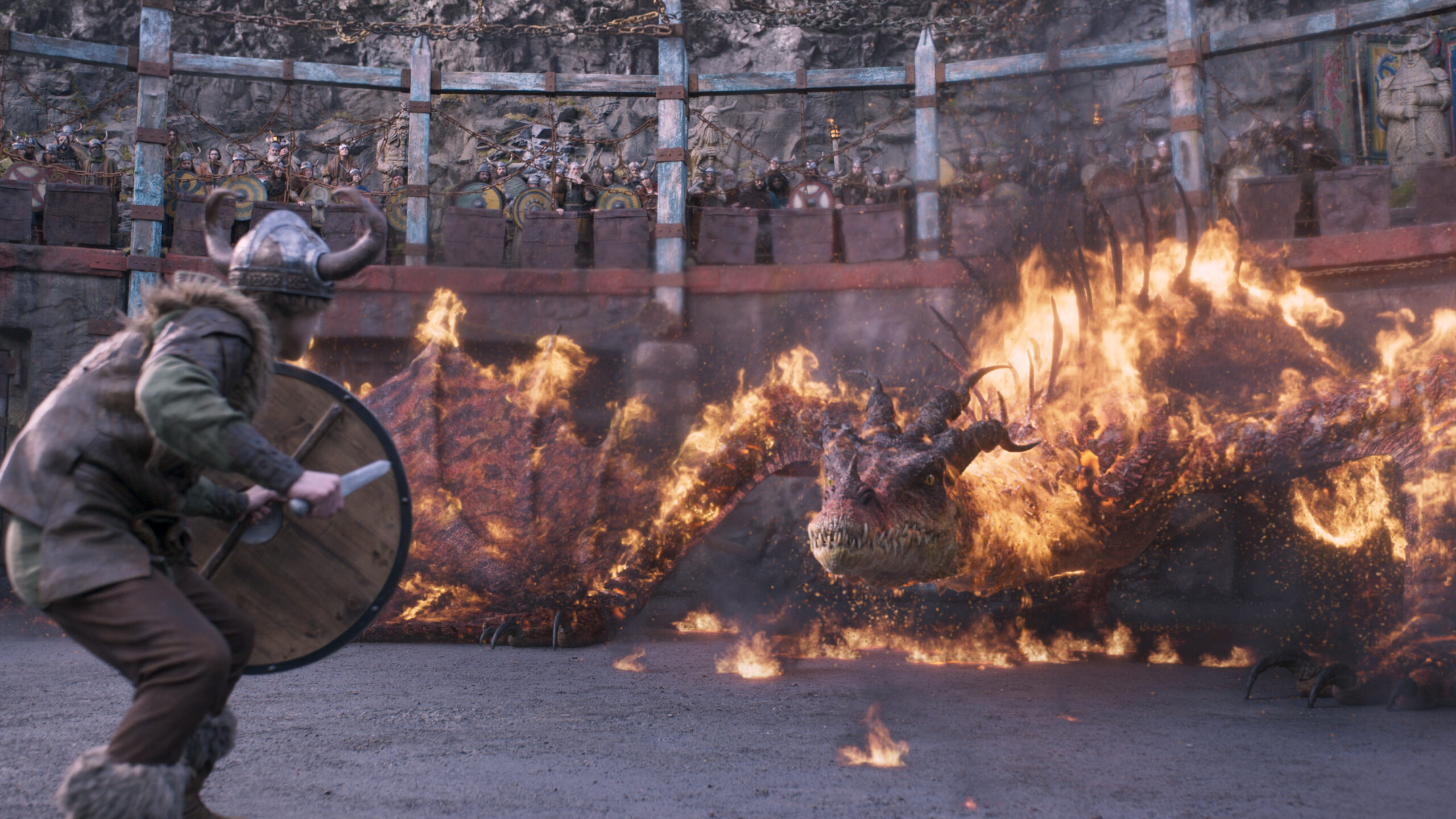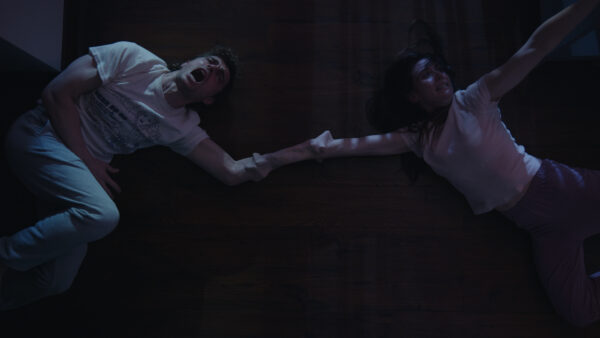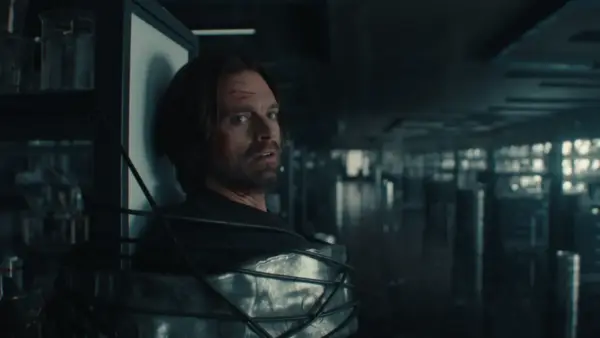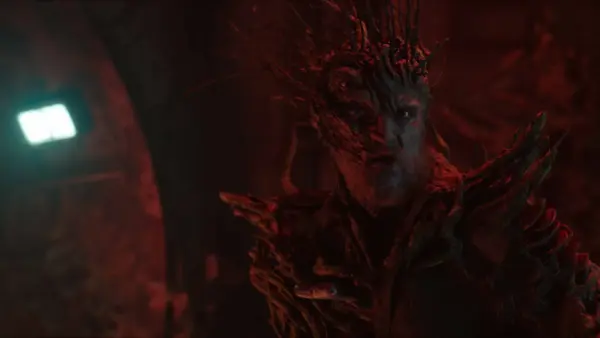From early concepts, visdev, previs, techvis, postvis and on-set supervision through to final VFX, Framestore provided a beginning-to-end creative offer for How To Train Your Dragon – Dean DeBlois’ blockbuster adaptation of his own beloved animated feature.
With 1400+ highly complex VFX shots to oversee – encompassing everything from thrilling action sequences, epic environments and nuanced creature animation – Framestore’s global studios were each allocated their own key sequences by Production VFX Supervisor Christian Mänz. The Melbourne team were charged with crafting the film’s arena training sequences – scenes packed with action, humour and no shortage of creative challenges.

“The arena scenes are where we really start to get up close and personal with the film’s wider cast of dragons,” says VFX Supervisor Dom Hellier. “We saw them early on in the film where they rampaged through the Viking village, but this is where we get a sense of their different characteristics and, crucially, set up the connections they’ll have with their respective Vikings later in the film.” These scenes see the film’s young, would-be dragon slayers pitted against the different dragon types – the Monstrous Nightmare, Deadly Nadder, Gruesome Gronckle, Hideous Zippleback and Terrible Terror – across a series of challenges to help them better fend off their scaly foes.
The challenges take place in a specially-designed arena, which was built as a practical set in Belfast and then digitally augmented, expanded and occasionally set aflame in Melbourne. “We needed to nest the arena within an imposing rock formation,” explains VFX Supervisor Glenn Melenhorst. “This meant expanding the practical set and blending it with the kind of natural rock strata and formations that Dean, Christian and Bill [Pope, DOP] had captured on their recce and shoot on the Faroe Islands. As well as the arena and surrounding mountainside we also rebuilt the arena’s fittings and fixtures – the barricades, mazes, weapon racks and crowds – in CG so that anything could be moved, tweaked or replaced as necessary.”

As well as being important to the film’s storytelling, the scenes were also core to conjuring a believable, immersive world. “Dean, Christian and Glen [McIntosh, Production Animation Supervisor] wanted to establish a sense of scale and weight with these scenes,” says Dom.
“We needed to get the audience to buy into this being a sturdy, well-made set-up that the dragons could only move or damage because they themselves are so strong and powerful. It speaks to the grounded realism and plausibility that runs through the entire film.”
VFX Supervisor Dom Hellier

On-set puppeteers were replaced with carefully-crafted CG dragons whose animated performances were carefully interwoven with those of the film’s young cast. The frenetic action and frequent sight gags also meant the VFX team’s work had to seamlessly blend with that of practical crafts like stunts and SFX. “For the scene where the bird-like Deadly Nadder is charging through the maze barricades it was necessary to build out the maze and replace practical props when the Nadder would collide with or punch through them,” says Glenn.

Despite the numerous challenges – blending plate photography and full CG elements, crafting clouds of CG dust and explosions of CG splinters – the team found the scenes involving the Deadly Nadder particularly rewarding. “I really enjoyed sending this aggressive, jerky, bird-like creature through a maze she could barely fit in,” says Animation Supervisor Nick Tripodi. “There’s a sense of chaos and confusion about the sequence that just grabs you by the collar. We actually looked to reference footage of a shark madly thrashing for the moments where the Nadder is tangled up in the broken maze walls – it needed that same sense of dangerous, anything-can-happen energy.”

Similarly dangerous was the Monstrous Nightmare, a fearsome creature with flamethrower breath and the ability to exude napalm from between its scales. “Dean wanted the Monstrous Nightmare to be the most crocodile, or serpent-like of the dragons, hence its elongated face and slithering movements,” says Dom.
“The Nightmare [dragon] was a real team effort, drawing on the talents of just about every team here in Melbourne, from rigging and animation through to FX, compositing and lighting. Each dragon had its own specific flame effects linked to its distinct personality, and given that the Nightmare’s fire manifests just about everywhere this demanded some really complex work that involved fluid, pyro and smoke simulations that differed depending on the fire’s intensity and where it was dripping from.”
VFX Supervisor Dom Hellier

From granular detail to helping establish major storytelling beats, the Melbourne team’s work proved pivotal – the result of incredible artistry and technical innovation, as well as years of shared experience.
“There was a palpable buzz when we landed How To Train Your Dragon,” says Lara Hopkins, Framestore’s Head of Studio, Melbourne. “We knew working with Dean, Christian and Glen would give us the opportunity to really push ourselves and help create something truly special. Every member of the team gave the film their all, and having How To Train Your Dragon on our list of achievements for the year alongside Thunderbolts*, Mortal Kombat 2 and Together showcases the breadth of talent, expertise and filmmaking knowledge we have here in Melbourne.”



